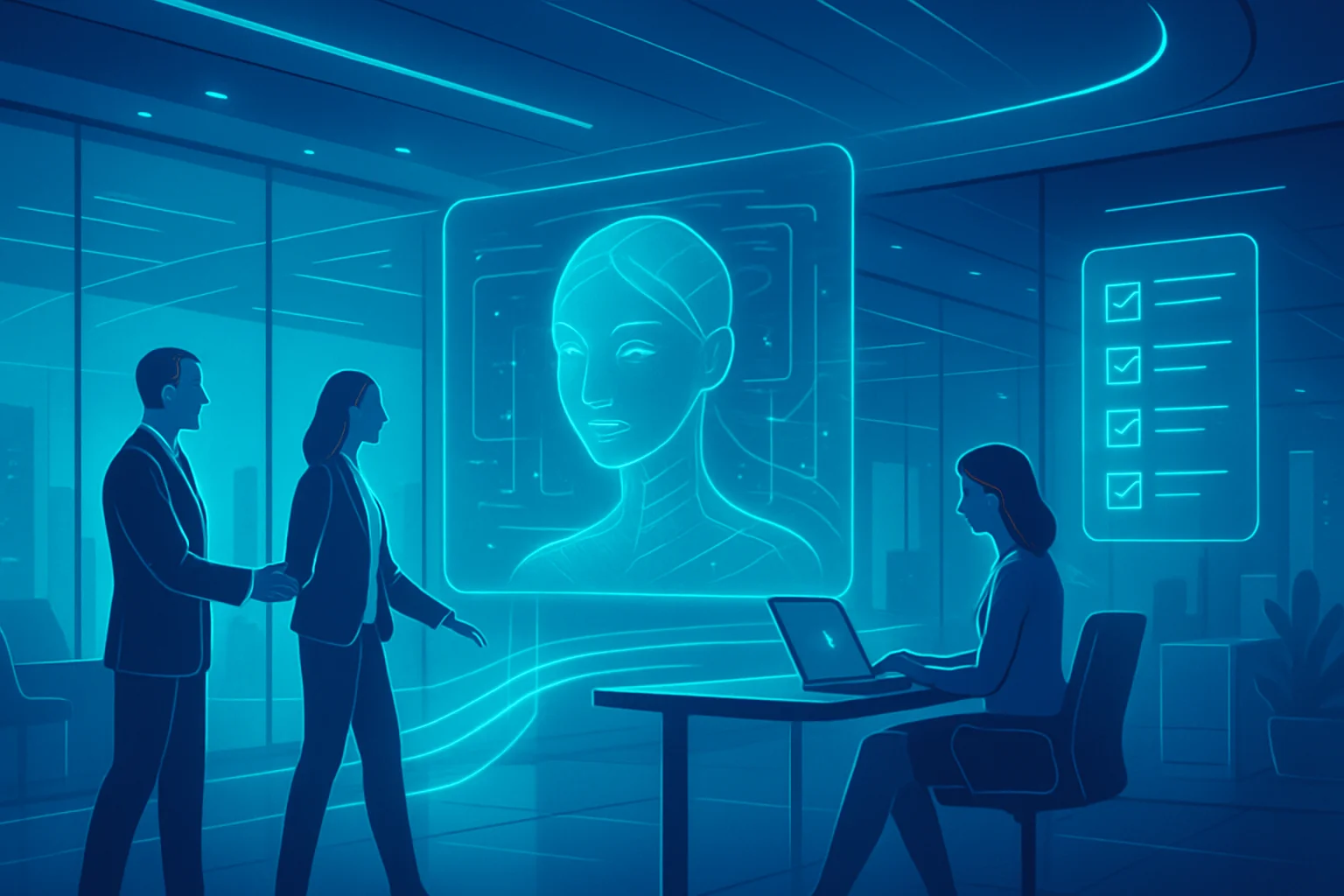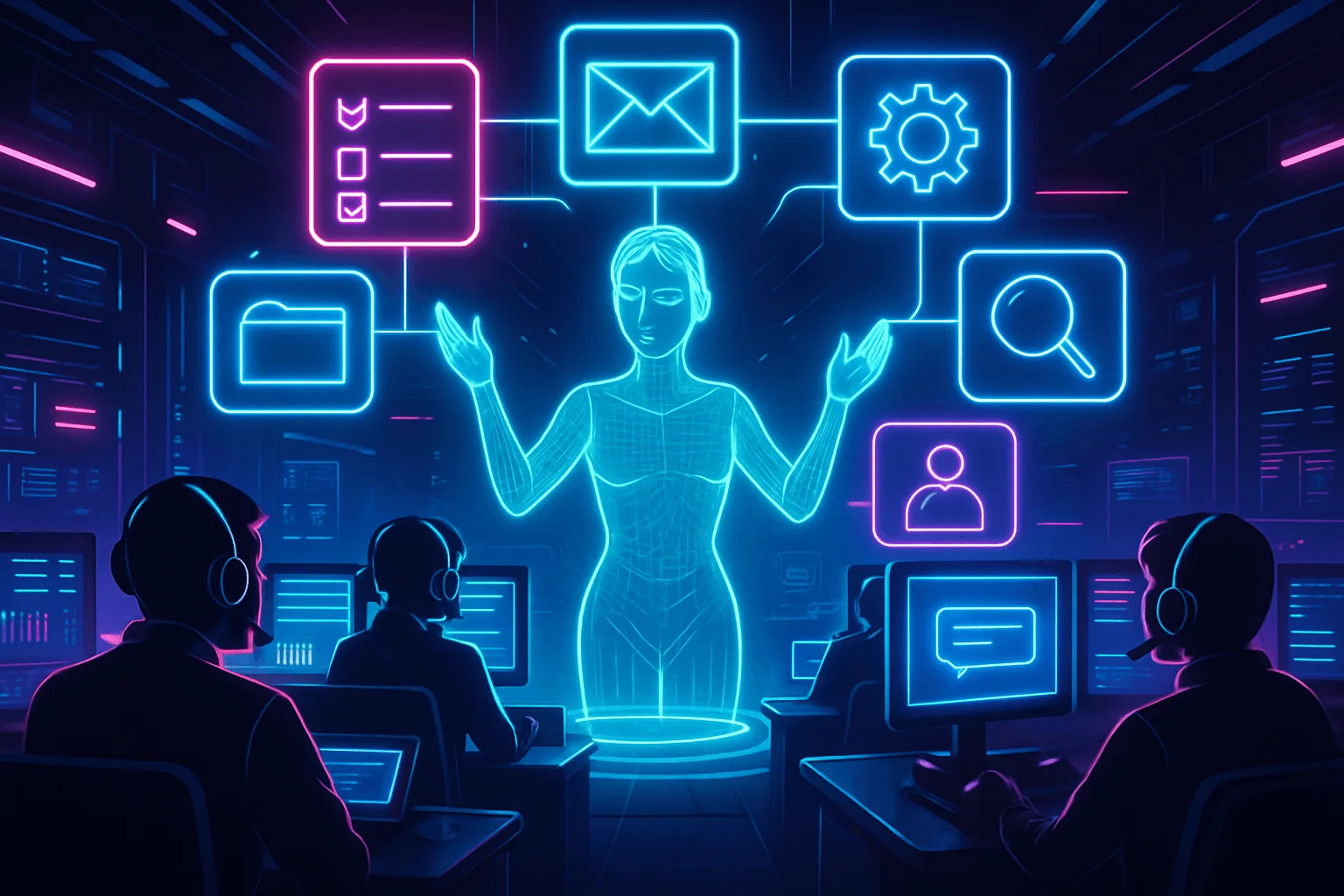AI Workflow Automation Improves Client Onboarding and Productivity

Imagine welcoming a new client to your business and impressing them not just with your services, but with a seamless, personalized onboarding experience—one that feels effortless for clients and liberating for your team. In today’s fast-paced market, first impressions count more than ever, and clunky, manual onboarding processes can hold back even the most capable organizations. AI-powered workflow automation is changing the game, enabling businesses to streamline repetitive tasks, reduce errors, and deliver a superior customer experience from day one.
Why does this matter? Because efficient client onboarding is more than a checklist; it sets the tone for your ongoing partnership and directly impacts client retention, satisfaction, and your team’s ability to focus on high-value tasks. Businesses that lean into automation are finding that not only are clients happier, but internal productivity soars as teams spend less time on paperwork and more time on relationship-building and innovation.
In this article, you’ll discover how AI-driven workflow automation revitalizes client onboarding processes, enhances the overall customer journey, and boosts your team’s efficiency. We’ll explore the biggest challenges of traditional onboarding, break down how AI eliminates common bottlenecks, and share actionable insights for integrating automated solutions into your own workflow. Whether your goal is to deliver faster onboarding, empower your staff, or simply wow your clients, you’ll come away with practical strategies to transform the way you work—no technical expertise required.
Automated Data Collection and Verification
Manually gathering and verifying new client information is tedious, error-prone, and slow—leading to onboarding bottlenecks and frustration. AI-powered workflow automation revamps this process by automatically collecting data from digital forms, validating entries in real-time, and cross-referencing with trusted databases (such as government ID registries or credit bureaus). This not only ensures accuracy but also saves enormous administrative time. Intelligent document parsing further extracts and matches relevant information from uploaded documents, reducing human effort and risk.
Typical Steps in an AI-Driven Data Verification Workflow:
- Client completes an AI-enhanced digital onboarding form (web or mobile).
- AI tools scan submitted data for missing or inconsistent entries, prompting for clarification instantly.
- System cross-checks details (e.g., address, ID numbers) against external databases via APIs.
- AI parses uploaded documents (e.g., driver’s licenses, business licenses), extracts key fields, and matches them to form inputs.
- Verified data is dynamically populated into CRM and compliance systems.
- Staff alerted only to exceptional or flagged cases, allowing human focus on high-value reviews.
Best Practice:
“Integrate AI with your existing CRM and compliance tools for seamless data flow, and always set rules for auto-escalation of questionable or incomplete data to human reviewers. This strikes the right balance between automation and oversight.”
Real-World Example:
A mid-sized wealth advisory firm was losing potential clients due to slow manual onboarding. After deploying an AI workflow, new clients could complete onboarding in under 15 minutes. The AI engine automatically checked government IDs against fraud lists, parsed address proofs, and imported verified data into their CRM. Compliance staff only intervened when anomalies were detected, drastically improving both efficiency and client confidence.
Intelligent Task Assignment and Progress Tracking
Assigning onboarding tasks—such as document requests or identity checks—to the right team member is often an ad hoc, manual process that causes confusion and delays. AI workflow automation introduces intelligent task routing based on workload, expertise, role, or client tier, streamlining collaboration and ensuring accountability. Automated progress tracking further provides real-time visibility and proactive alerts, so nothing falls through the cracks and clients are kept informed throughout.
Key Steps in AI Task Assignment & Tracking Workflow:
- Upon client sign-up, workflow identifies required onboarding steps based on client type and current data status.
- AI assigns tasks to the most suitable team members, considering capacity, experience, and predefined rules.
- Tasks (e.g., “manual compliance review” or “follow-up on missing docs”) are created in project management tools with due dates.
- Workflow monitors progress, sends automated reminders or escalations for overdue items.
- Real-time dashboards update both staff and clients on status.
- Clients receive periodic, AI-generated status updates and reminders.
Best Practice:
“Map every onboarding step to clear owners and automate reminders/updates for both staff and clients. Transparent AI-powered tracking equals faster onboarding and happier customers.”
Mini Scenario:
A SaaS provider previously struggled with onboarding spikes each quarter, which overwhelmed their customer success team and led to missed steps. With an AI-driven routing system, tasks were automatically distributed based on real-time team bandwidth and skillset. A visual tracker showed clients their onboarding status bar, reducing incoming “what’s the status?” emails by 80% and shaving days off the onboarding journey.
Personalized Welcome and Nurturing Sequences
A first impression can make or break a client relationship. AI allows firms to automatically personalize welcome emails, key resources, walkthroughs, and nurture content based on each client’s needs and profile. By integrating onboarding workflows with behavioral analytics and segmentation engines, organizations can deliver relevant communications, tutorial content, and check-ins at exactly the right moments, nurturing engagement and confidence.
Personalized AI Welcome Workflow Steps:
- AI segments new clients by business type, onboarding speed, product interest, onboarding channel, etc.
- Welcome emails, guides, and support materials are dynamically personalized and triggered at optimal times.
- Guided tutorials or onboarding calls are suggested or scheduled according to client segment and behavior.
- AI chatbots answer initial client questions, providing instant support 24/7.
- Engagement is tracked; if key milestones are not completed, AI triggers reminders or proactive outreach from a human rep.
Best Practice:
“Go beyond generic greetings: Use AI to tailor welcome and onboarding flows based on client demographics, use case, and engagement data, then continually refine your messaging based on feedback and results.”
Example—Insurance Broker Onboarding:
After automating its onboarding nurture flow, an insurance agency found conversion from prospect to policyholder jumped 40%. AI sent bespoke welcome kits, explained policy types tailored by client profile, and automated check-ins nudged clients to finish profile setup. High-touch follow-up calls were reserved only for those showing hesitation or needing complex support, improving agent productivity alongside customer satisfaction.
Compliance Monitoring and Documentation
Meeting regulatory requirements is non-negotiable; however, compliance checks are time-consuming and, if rushed or missed, can jeopardize business. AI workflow automation brings continuous real-time compliance monitoring and automates documentation. By enforcing consistent rules, retaining audit trails, and flagging anomalies, AI frees teams from repetitive paperwork, allowing more focus on nuanced compliance projects and risk assessment.
Compliance Workflow Steps Enhanced by AI:
- AI reviews all collected client info and documents for regulatory completeness (KYC, AML, GDPR, etc.).
- Automated logic compares submitted material to compliance checklists and flags missing or risky data.
- Electronic audit trails are automatically stored and updated for all actions and communications.
- Real-time alerts generated to compliance staff if thresholds are crossed or high-risk factors detected.
- AI-generated documentation (e.g., onboarding logs, compliance proof) is filed securely for future audits.
Best Practice:
“Automate as much compliance documentation and monitoring as possible—but always pair automation with human review for flagged cases. Regularly update AI models as regulations evolve to stay ahead of risks.”
Scenario—Fintech Startup Compliance:
A digital payments company used to have compliance staff manually spot-check every new client file. After automating onboarding compliance with AI, staff spent 70% less time on data checking. Automated alerts hone in on genuine red flags, allowing human experts to focus their expertise where it’s needed most. Audits became painless, as the system automatically organized documentation and generated compliance reports with a click.
Common Challenges
While AI workflow automation holds transformative potential, its adoption in client onboarding isn’t without obstacles. Being proactive about these pitfalls is vital to success.
-
Data Quality and Integration Issues:
Ingesting incomplete, inconsistent, or siloed data can impair automation outcomes and cause downstream errors. Integration with legacy systems or poorly maintained databases often introduces friction.“Invest early in data cleansing, standardization, and API-driven integrations to feed your workflows quality inputs from day one. Consider data governance hygiene as foundational—not optional.”
-
Over-Automation Causing Loss of Personal Touch:
Excess reliance on automation—especially in sensitive onboarding moments—can alienate clients if human empathy or customization is lacking. Automated communications that sound robotic or lack context can erode trust.“Always design workflows that reserve space for meaningful human interaction, especially for high-tier or complex clients. Let AI do the heavy lifting, but never let it replace authentic relationship-building where it matters.”
-
Change Resistance and Training Deficits:
Teams may resist new workflows out of fear, confusion, or lack of relevant skills, risking unused systems and lost ROI.“Focus on change management by providing clear ‘what’s in it for me’ training, ongoing support, and visible quick wins. Appoint transformation champions to mentor colleagues and drive adoption.”
FAQs
1. How do I choose the right AI workflow platform for my onboarding needs?
Selecting the best-fit AI automation solution depends on integration capability, scalability, and ease of customization. Key assessment areas:
- Integration: Ensure the tool works with your CRM, compliance, and communication platforms. Look for robust APIs and pre-built connectors.
- Workflow Flexibility: Assess the platform’s ability to design custom workflows and adapt as your processes evolve.
- AI Capabilities: Prefer solutions with built-in AI/ML for data parsing, decision-making, and analytics—not just rule-based automation.
- User Experience: Evaluate both staff and client interfaces; frictionless usability increases adoption.
- Security/Compliance: Prioritize vendors with strong data security standards and regular updates to stay compliant.
2. How much can AI automation reduce onboarding time and costs?
Based on industry benchmarks and case studies:
- Onboarding time can typically be reduced by 40–70% (from days or weeks to hours or even minutes for standard clients).
- Labor costs for repetitive tasks drop considerably, as staff are redirected from data entry/checking to relationship-building and problem-solving.
- Improved client satisfaction (faster time-to-value, fewer status queries, seamless communication) further reduces churn and winback costs.
That said, results depend on the complexity of your onboarding, the quality of your current data, and your willingness to continuously optimize workflows.
3. Is AI onboarding automation suitable for all client segments, including high-value or regulated clients?
AI automation brings substantial benefits across all segments but is most impactful for high-volume, repetitive onboarding. For high-value or heavily regulated clients, AI should handle data-intensive checks, documentation, and initial communication, but workflows must ensure ample human oversight and tailored service.
- For VIP clients, design hybrid workflows: automate routine verification and reporting, but enable concierge-style interactions at key steps.
- In highly regulated industries (e.g., finance, healthcare), ensure your AI processes are always paired with compliance officer review for exceptions or high-risk cases.
The best results come from blending AI efficiency with bespoke human expertise—matching the client’s expectations and your regulatory obligations.
As we’ve explored, AI-powered workflow automation is revolutionizing client onboarding by streamlining processes, reducing manual errors, and accelerating timelines. By adopting intelligent automation tools, businesses can enhance both customer experience and internal productivity, freeing up valuable resources for more strategic work. From mapping out current onboarding journeys to identifying repetitive tasks that can be automated, the strategies covered offer a blueprint for smoother, more efficient client engagement. This topic matters because efficient onboarding sets the tone for your entire customer relationship and directly influences team morale and output.
Now is the time to reflect on your organization’s current workflows: where could automation make the biggest impact for your clients and your team? Consider the actionable tips discussed—like starting small, integrating AI with existing platforms, and continually optimizing your processes—to ensure long-term success. We invite you to share your experiences or questions in the comments below, and to try out an automation tool that aligns with your business needs. Embrace the transformation—your clients and your team will thank you.



